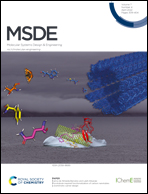A review of 3D printing technology for rapid medical diagnostic tools
Abstract
Early diagnosis of diseases leads to selecting the appropriate treatment method and prevention of problems, such as drug resistance. It also prevents the spread of diseases and pandemics in some cases and plays a crucial role in treating diseases. In some diseases, such as bacterial infections, effective diagnoses prevent antibiotic overuse and make such antibiotic treatments futile against infections. Additive manufacturing (AM) or 3D printing has received great attention in recent years and has been applied in a wide variety of biomedical applications, such as implants and diagnostic tools. The structures fabricated via this method are highly precise and economical and can have complex geometries, such as interconnecting channels, undercuts, and curvatures. Developing sensors and sensor arrays in a shorter time with high sensitivity is possible by applying AM fabrication approaches. Other fields such as dentistry also take advantage of 3D printing technology to ease the diagnosis process as it helps to fabricate complex structures with dimensions close to reality which cannot be achieved by any other method. In this review, recent advances in AM fabrication methods in producing rapid diagnosis tools have been discussed by providing a classification of advanced diagnostic tools using AM.

- This article is part of the themed collection: Additive Manufacturing


 Please wait while we load your content...
Please wait while we load your content...